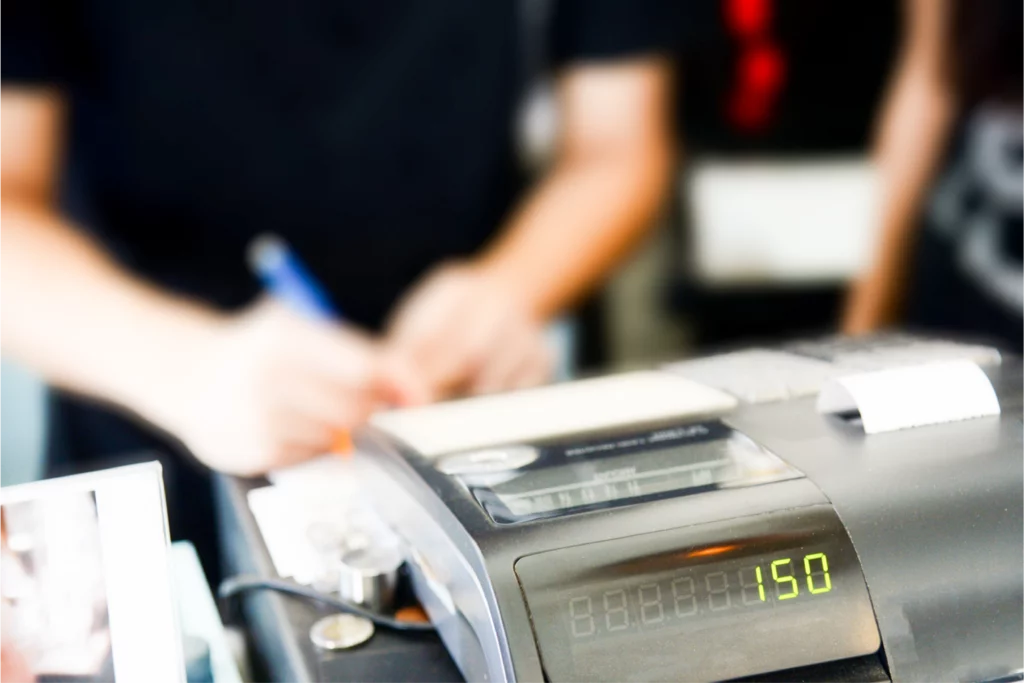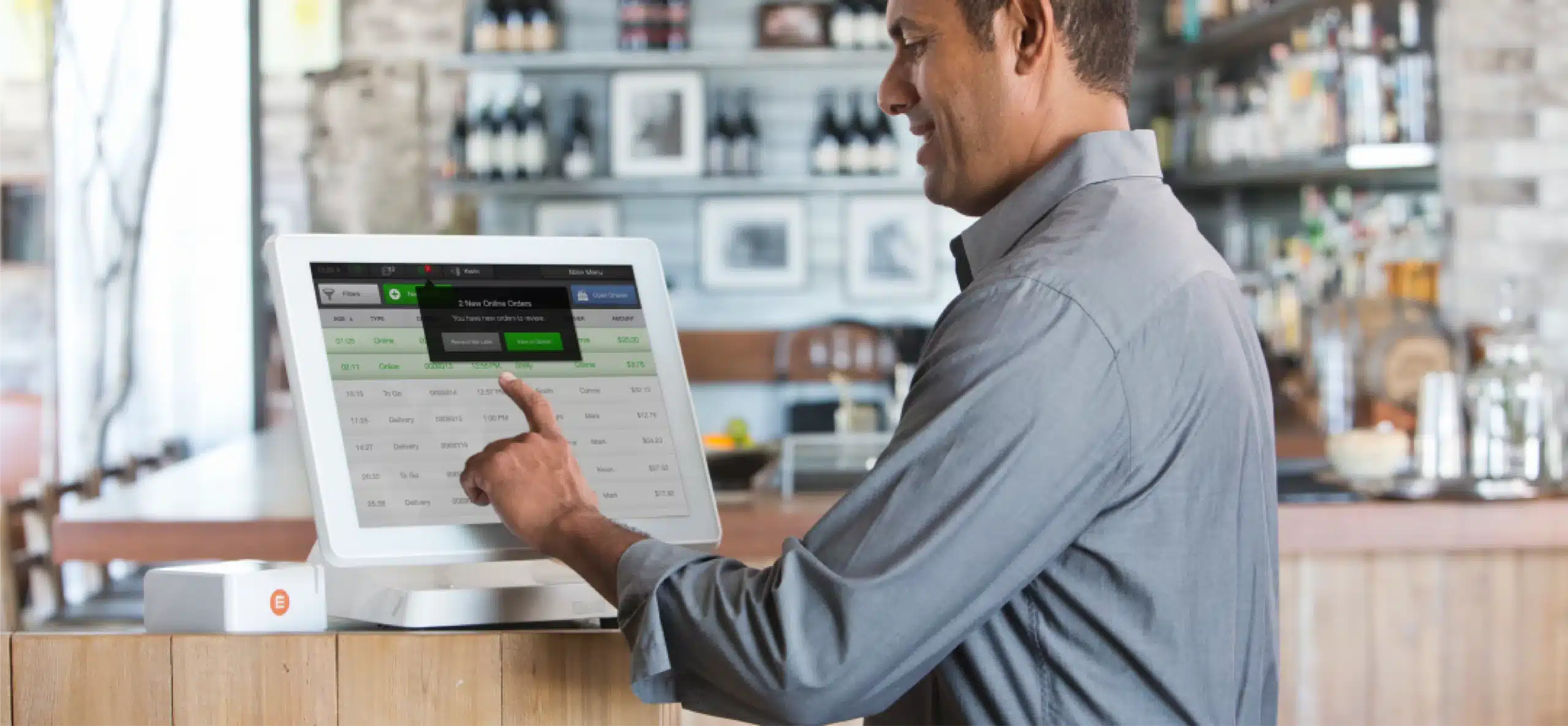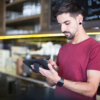In the world of restaurants and hospitality, many are confused about the differences between cash registers and point-of-sale (POS) systems. Although traditional cash registers have been a staple of business transactions for many years, POS systems have become increasingly popular due to their integrated payment processing, inventory management, and restaurant loyalty programs.
Both cash registers and POS systems have their own unique benefits and limitations. This makes choosing between them a difficult decision for businesses. In this article, we will explore the differences between cash registers and POS systems. Additionally, we will also discuss their respective functionalities and provide guidance on factors to consider when choosing between the two.
Cash registers and POS systems are sometimes talked about interchangeably and can be easily confused by business owners when they are deciding which one to implement. Even though they both help process sales, their capabilities are vastly different.
What is a cash register?

A cash register is a mechanical or electronic device used for processing sales transactions in businesses such as restaurants and retail stores. The basic function of a cash register is to calculate the total amount of a sale and store cash.
It typically has a display that shows the amount due and a drawer for storing cash. Many modern cash registers also come equipped with additional features, such as a credit card terminal or a barcode scanner.
The cashier inputs the sale information, and the cash register calculates the total, displays it to the customer, and records the transaction. The cash drawer can then be opened to provide change to the customer or to store the cash received. Overall, cash registers are a straightforward tool for managing sales transactions.
Benefits of a Cash Register
Cash registers offer several advantages to businesses, including:
#1 – Affordability/low cost
Cash registers are generally less expensive than POS systems. This makes them an ideal option for businesses on a tight budget.
#2 – Simplicity
Cash registers are simple to use. They require little to no technical knowledge, making them accessible to employees who may not be tech-savvy.
#3 – Durability
Cash registers are designed to withstand heavy use and can last for many years with proper care and maintenance.
#4 – Limited technical issues
Cash registers have fewer technical components than POS systems. Therefore, they are less likely to experience technical issues.
Limitations of a Cash Register
While cash registers offer many benefits, they also have some limitations. Such limitations include:
#1 – Limited functionality
Cash registers are primarily designed for processing sales transactions. So, they do not offer the advanced features found in POS systems, such as inventory management and cloud-based sales reporting.
#2 – Less accurate record-keeping
Cash registers rely on manual entry of sales data, which can be prone to errors. Additionally, they do not offer the same level of record-keeping as POS systems. This can make it more difficult to track sales and revenue over time.
#3 – Limited payment options
Cash registers typically only accept cash and credit card payments. This can be a limitation for businesses that want to offer additional online payment options.
Overall, cash registers are a reliable and affordable option for businesses. However, they may not be the best choice for businesses that require advanced functionality or more robust record-keeping capabilities.
What is a POS System?

A POS (point of sale) system is a computerized system used by businesses to manage sales transactions and other business operations. Unlike cash registers, POS systems serve as the vital core of your entire business operation.
A typical POS system includes hardware such as a computer or tablet, a cash drawer, and a receipt printer, as well as software designed to facilitate sales transactions and manage business operations.
For example, CAKE POS provides cloud-based functionality, allowing restaurants to access and manage their data from anywhere. Its versatility and integration with various hardware components make it a complete solution for restaurant and hospitality businesses.
The growing popularity of POS systems
Business owners love POS systems because they save time and money, while guests love to feel like they’re getting the best possible service. A recent report by Grand View Research found that the global POS terminal market size was valued at USD 94.40 billion in 2022 and is expected to grow at a CAGR of 8.3% from 2023 to 2030. This growth is being driven by the increasing adoption of POS systems by businesses of all sizes, as well as the growing popularity of mobile POS systems.
As per the findings of a survey conducted by Hospitality Technology on POS purchasing plans for 2023, almost 71% of respondents plan to integrate new functionality, features, and modules into their existing POS software. Moreover, 43% of operators consider a POS system for use on a mobile device a top priority for purchasing.
Benefits of a POS system
#1 – Increased efficiency and speed
POS systems can process sales transactions quickly and accurately. As a result, you can reduce wait times and improve customer satisfaction.
For restaurants, FOH and BOH employees alike can save time taking orders with mobile POS systems, and the margin of human error is vastly decreased. In addition to that, processing credit cards with a POS saves your business from having to reconcile multiple systems and keeps guests’ data more secure.
#2 – Accurate record-keeping
POS systems automatically record sales data. This can help business owners keep track of sales trends, inventory levels, and other important business metrics.
By utilizing the CAKE POS system, businesses can enhance their record-keeping accuracy and minimize errors. They can also streamline operations and gain valuable insights into their overall performance. It revolutionizes accurate record-keeping in several ways. These include streamlined transaction tracking, real-time inventory management, detailed sales reports, and financial accuracy.
#3 – Advanced inventory management
Many POS systems include features for managing inventory and menu changes, such as tracking stock levels, receiving alerts when inventory is low, and making price adjustments.
CAKE POS offers advanced inventory management capabilities that empower businesses to optimize their inventory processes. Some of these include real-time updates on inventory levels.
This allows you to monitor stock availability accurately, ingredient-level tracking, and report or make menu adjustments fast from the POS or online.
#4 – Ability to accept multiple payment types, such as QR codes
POS systems can accept a variety of payment types, including credit and debit cards, mobile payments, and even QR codes. CAKE POS also offers efficient contactless payment solutions. Therefore, guests can pay on their own devices and meet their changing demands.
#5 – Integration with other business software.
POS systems can integrate with other business software, such as CRM systems, to provide a comprehensive view of business operations.
The CAKE POS system offers seamless integration capabilities with other business software to streamline operations and enhance efficiencies, such as API integration, third-party integrations, custom integration solutions, and streamlined workflows.
Limitations of a POS System
While POS systems offer many benefits, they also have some limitations, including:
#1 – Cost
POS systems can be more expensive than cash registers, especially for businesses with multiple locations or complex operations.
#2 – Technical issues
These rely on technology, which means they can experience technical issues such as connectivity problems, software glitches, and hardware failures.
#3 – Complexity
They can be more complex to set up and use than cash registers, which may require additional training for employees.
Overall, while POS systems offer advanced features and functionalities that can help businesses operate more efficiently, they may not be the best choice for all businesses, especially those with limited budgets or simpler operations.
Factors to Consider When Choosing a POS System vs Cash Register
When considering the differences between a cash register and a POS system, there are several other factors to consider before you make your decision:
#1 – Size of business
The size of a business is an important consideration when choosing between a cash register and POS system. Smaller businesses with limited inventory and sales may find that a cash register is sufficient for their needs. On the other hand, larger businesses with a higher volume of transactions or a need for advanced inventory management and sales analytics may find that a POS system is a better fit.
#2 – Complexity of business
The complexity of a business is another important factor to consider. A cash register would be sufficient for businesses with a single location and a small number of products, while a POS system may be a better fit for businesses with multiple locations, a large inventory, or complicated pricing structures. It’s also important to consider whether the business has plans to grow or expand in the future.
#3 – Budget
Budget is another important consideration. Cash registers are generally more affordable than POS systems, which may make them a better choice for businesses with limited budgets. However, it’s important to keep in mind that a POS system may offer a better return on investment over time.
#4 – Need for advanced features
The need for advanced features is another factor to consider. The majority of consumers own smartphones, and the remainder still must interface with technology every day. Our culture is rapidly changing to incorporate technology’s many uses, and it’s important for the restaurant industry to stay current.
As the hospitality industry evolves to better serve guests and staff across an ever-expanding array of touchpoints, the drivers impacting POS upgrades are critical for improving customer engagement, such as using data to better understand their preferences. These drivers also include mobility and self-service restaurant technology.
A cash register is a simple device that can process transactions and print receipts, while a POS system offers a range of advanced features such as inventory management, sales analytics, and integration with other business software. If a business needs these advanced features, a POS system may be the better choice.
#5 – Technical expertise of staff
Finally, it’s important to consider the technical expertise of the staff. Using a POS system would require training upfront, and ongoing support may be needed to ensure that the system is used effectively. If the staff lack the necessary technical skills, a cash register may be the better choice.
By considering these factors and the differences between cash registers and POS systems, businesses can choose the payment system that best fits their needs and helps them operate more efficiently.
Unlock Efficiency with CAKE’s Advanced POS Solutions
In conclusion, choosing between a cash register and POS system is an important decision for businesses of all sizes. While cash registers are simple and affordable, they may not provide the advanced features and capabilities that a modern business needs. POS systems, on the other hand, offer a range of advanced features and integrations that can help businesses operate more efficiently and effectively.
When selecting a POS provider, it’s important to choose a reliable partner with 24/7/365 access to customer support. CAKE offers this and cloud features to help improve the restaurant experience and grow.
FAQs
Are there any security differences between cash registers and POS systems, especially concerning customer payment information?
While both systems handle transactions, POS systems often offer more robust security features such as encryption for sensitive data, tokenization to protect card information, and compliance with industry standards like PCI DSS. Cash registers, on the other hand, may lack these advanced security measures, potentially making them more vulnerable to breaches.
How does the implementation process differ between cash registers and POS systems, and what kind of ongoing maintenance do they require?
Cash registers are typically simpler to set up and may require minimal training for staff. Maintenance usually involves basic upkeep like cleaning and occasional repairs. On the other hand, implementing a POS system like CAKE involves setting up hardware and software, configuring menu items and pricing, and easy training staff on how to use the system effectively. Ongoing maintenance may include automatic software updates, troubleshooting technical issues, and periodic hardware upgrades.
Can a POS system like CAKE integrate with existing software solutions a restaurant may already be using, such as accounting software or inventory management systems?
Certainly, CAKE’s cloud-based POS can integrate with existing software solutions such as accounting software or inventory management systems that a restaurant might already have in place. For example, CAKE can integrate with accounting software like Quickbooks or Xero for seamless financial management. It can also integrate with inventory management systems like R365 or Orca to streamline inventory tracking and ordering processes. Additionally, CAKE offers integration capabilities with other business software through APIs, custom integration solutions, and streamlined workflows, providing an all-in-one solution for restaurant operations.





